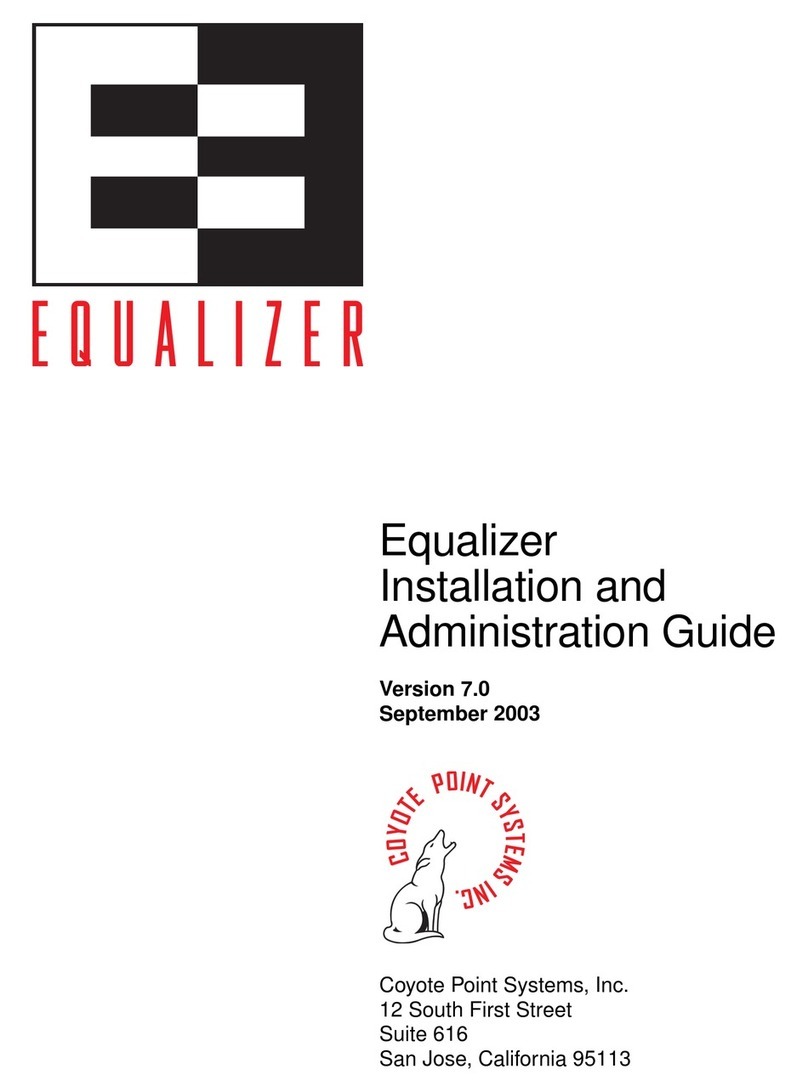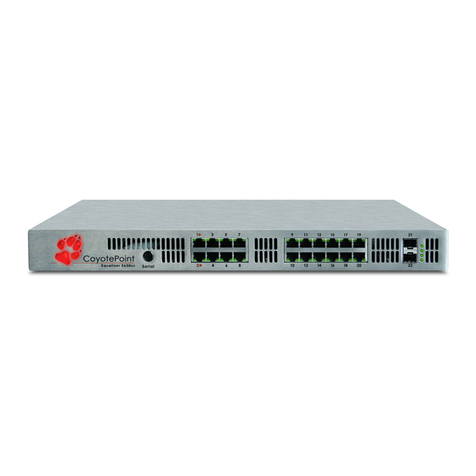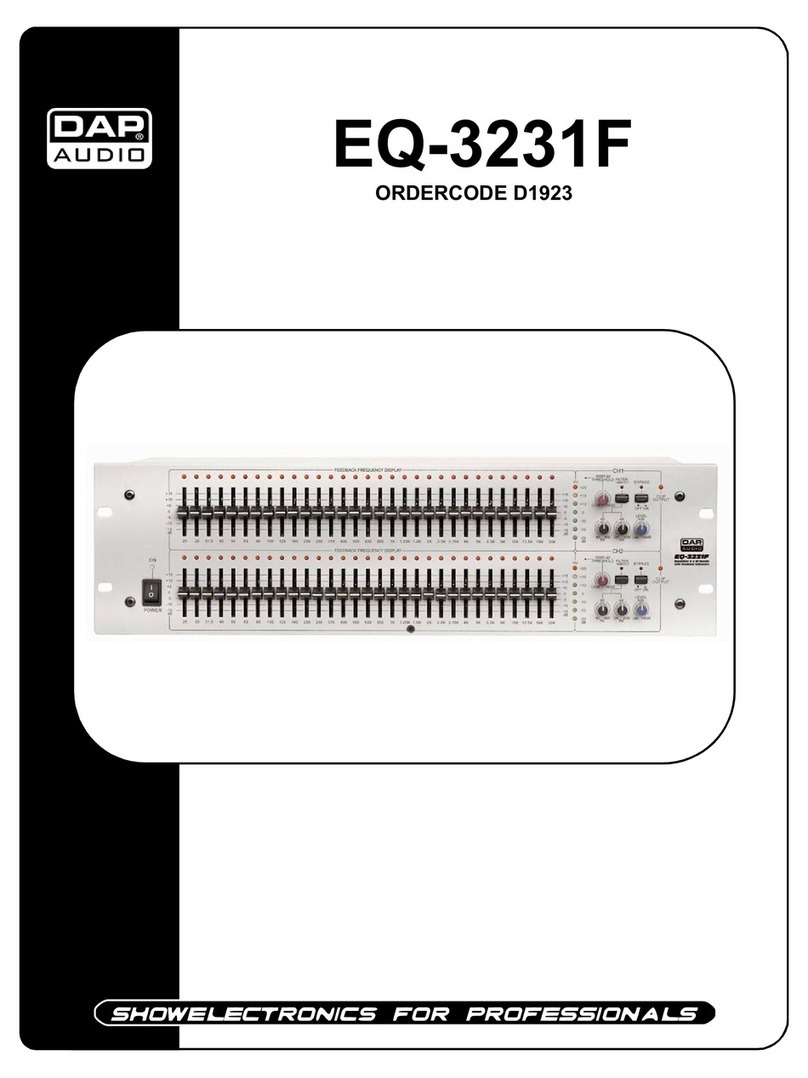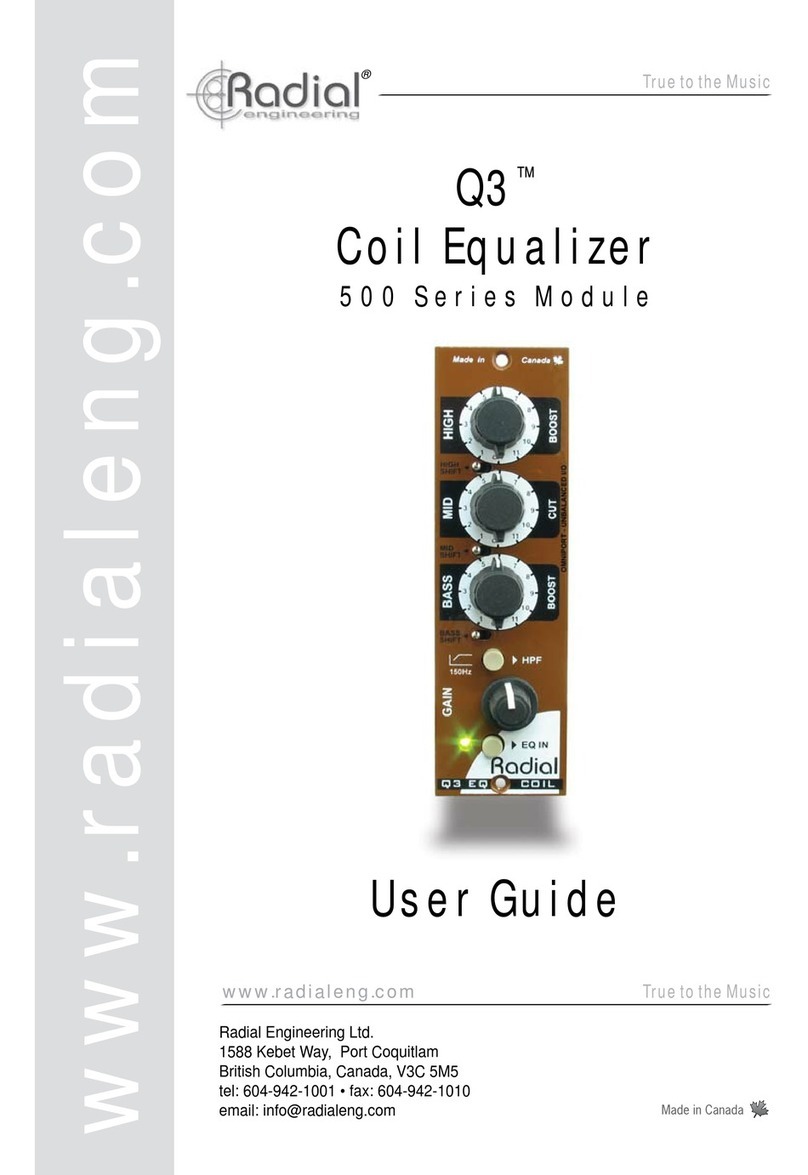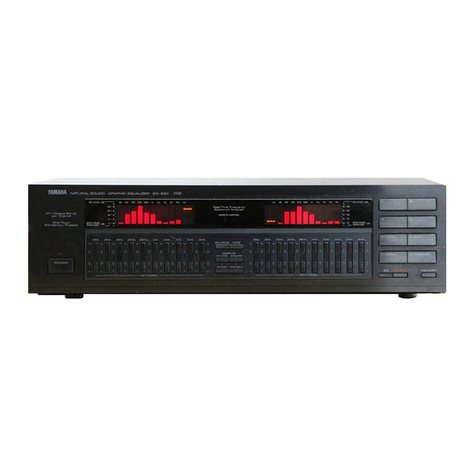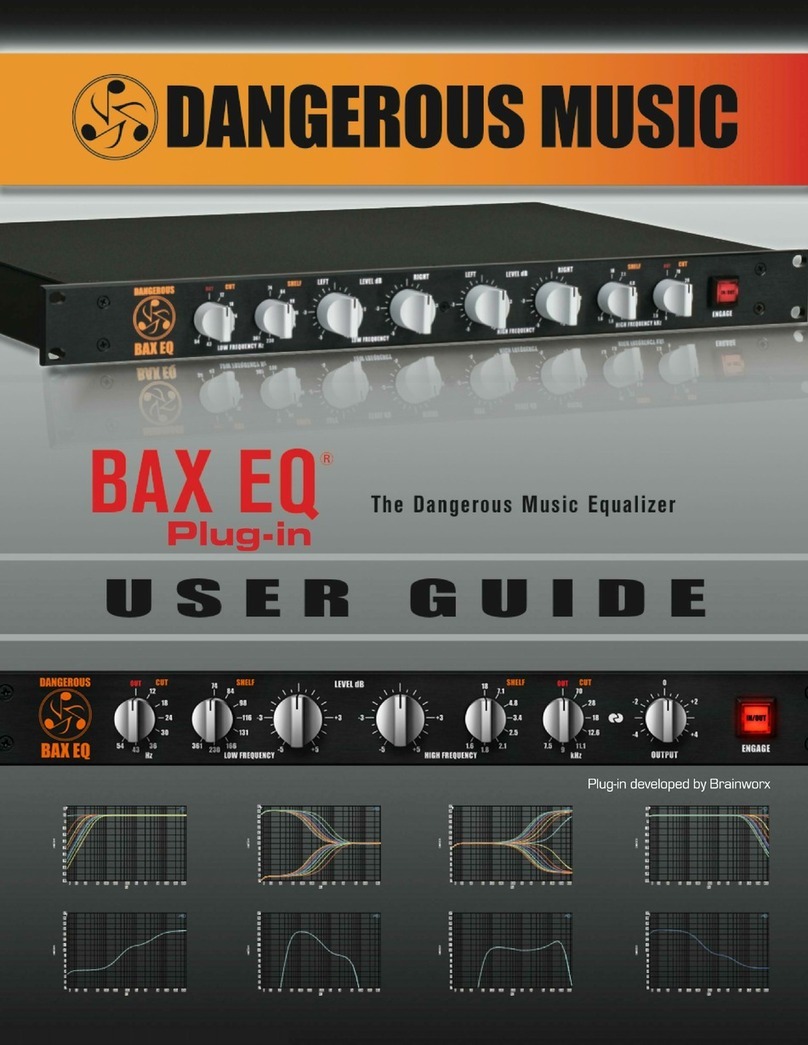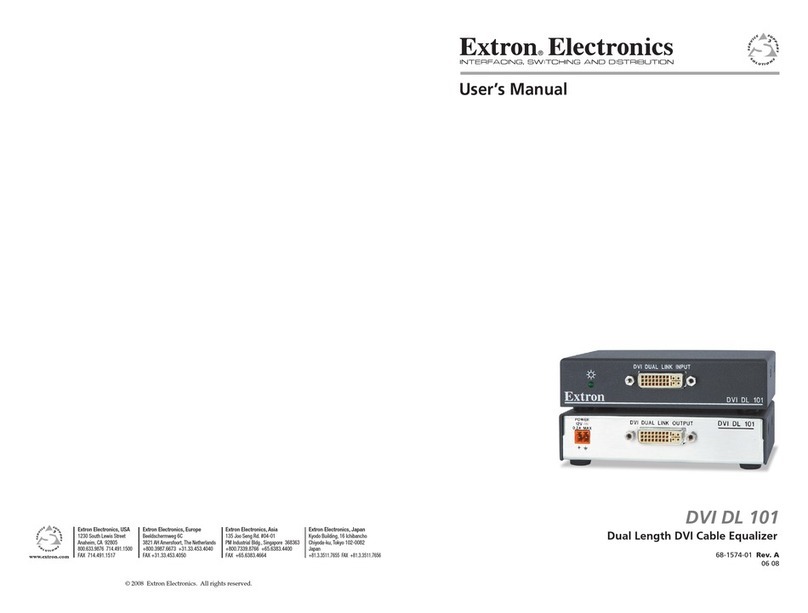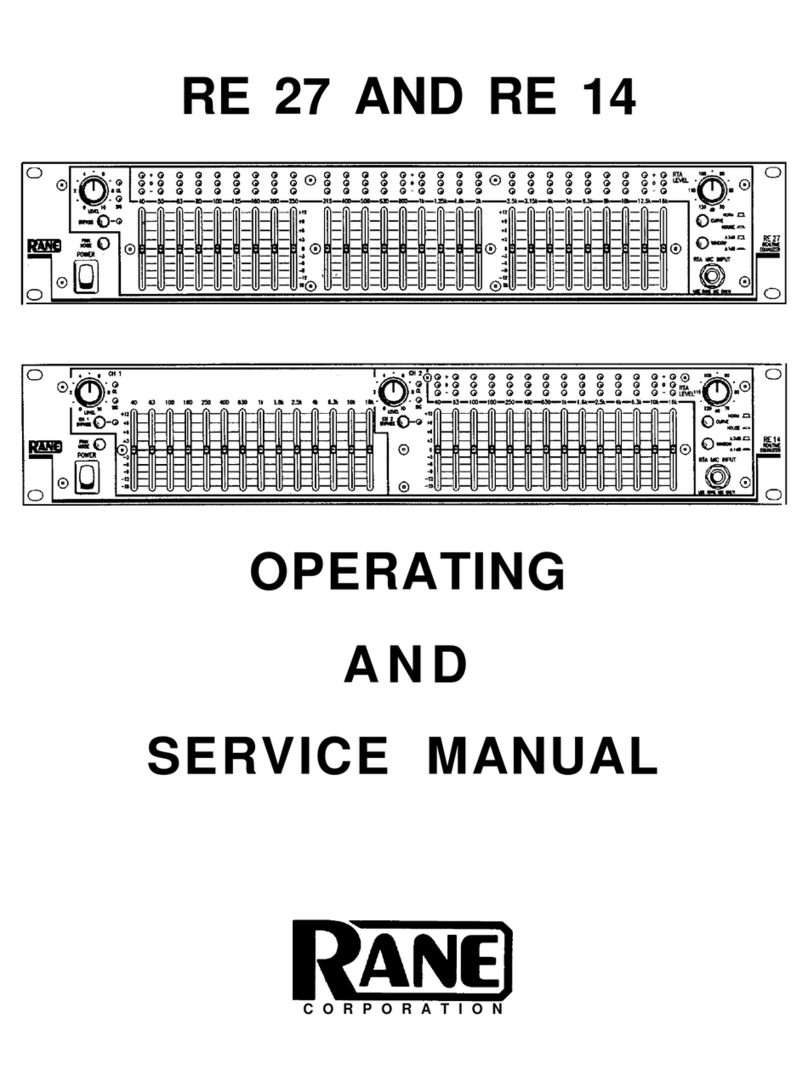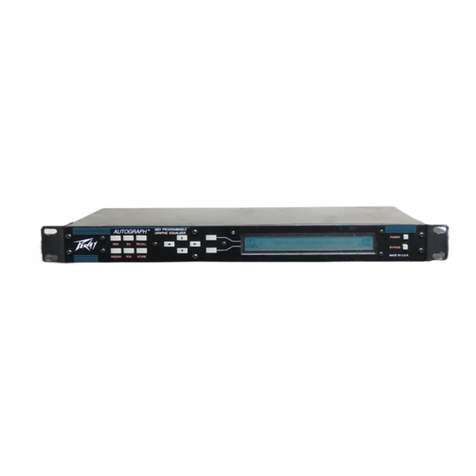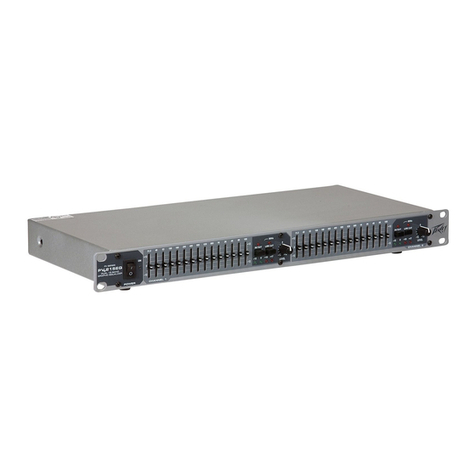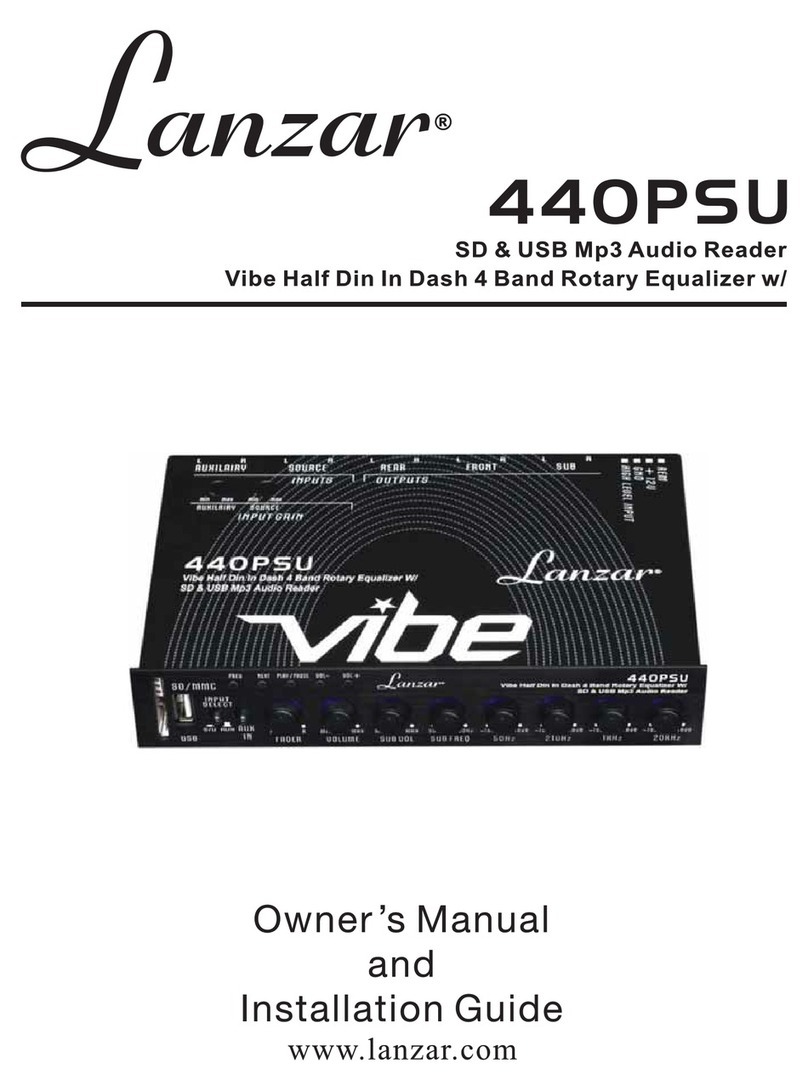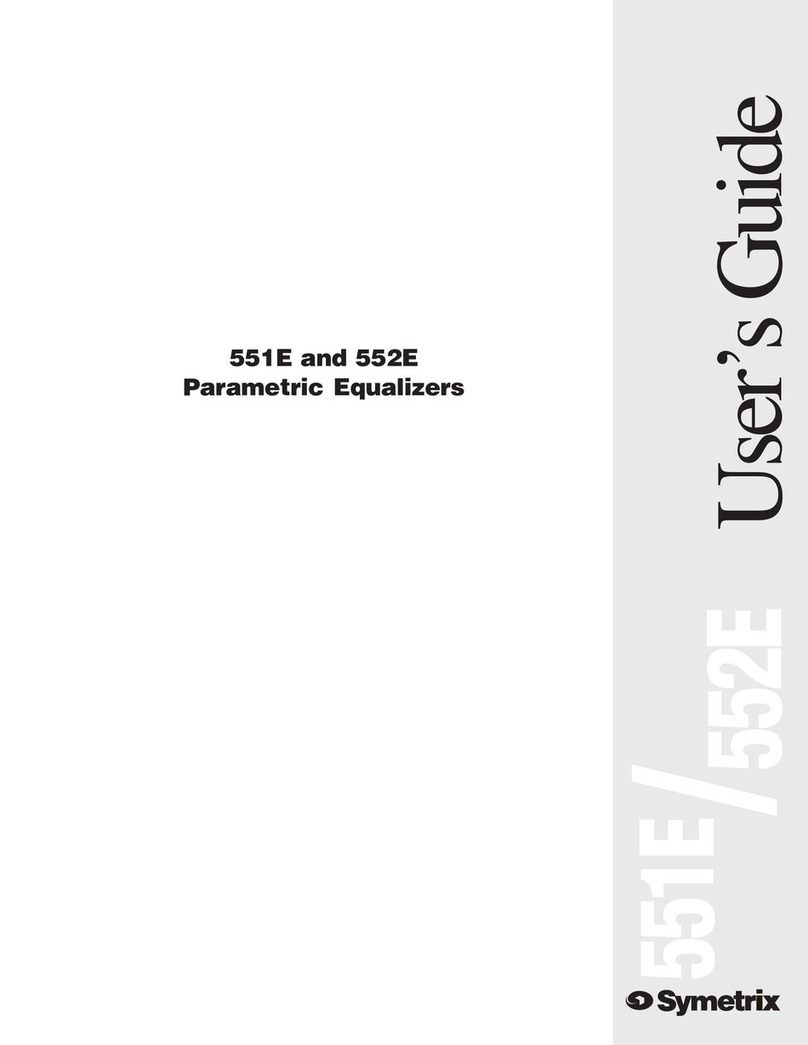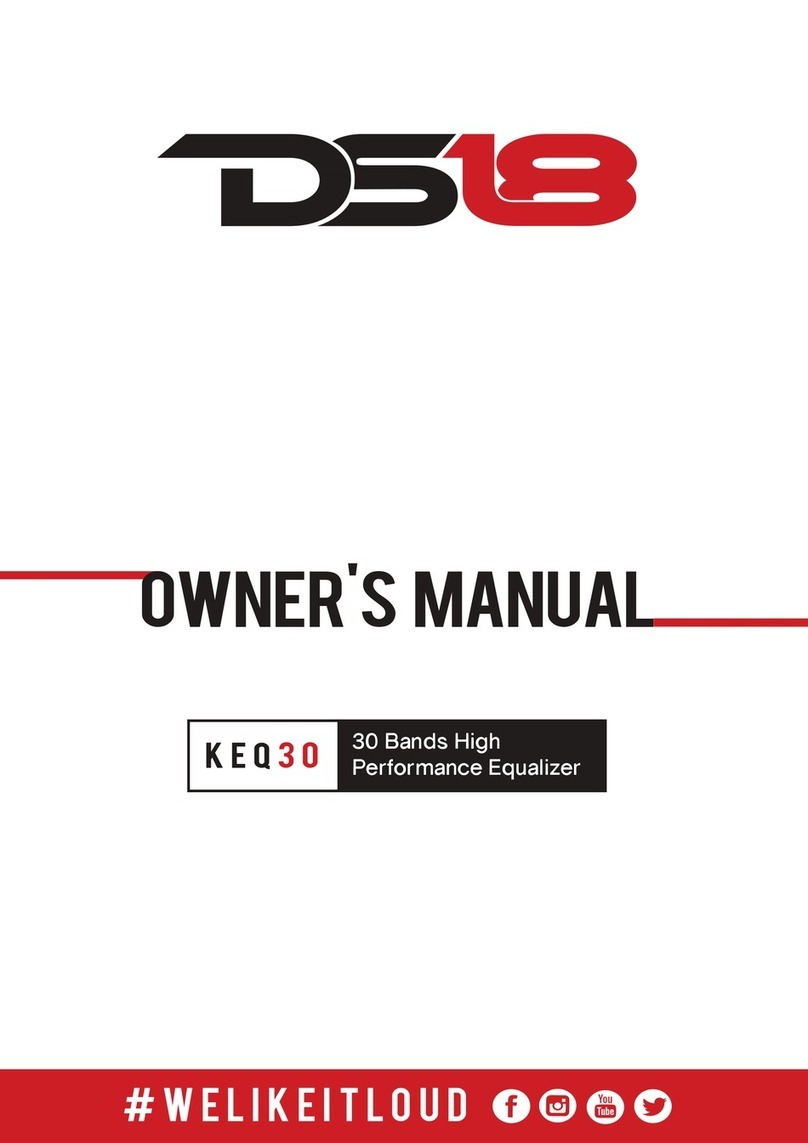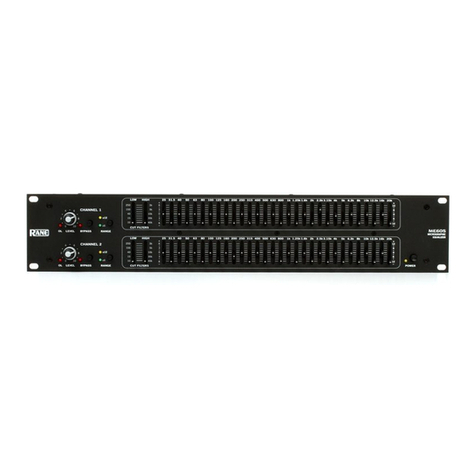Coyote Point Systems Equalizer GX Series Instruction Manual

APPLICATION DELIVERY CONTROLLER
EQ/OS 10
Administration Guide
for Equalizer™ LX and GX Series
OS Version 10.3.1
December 23, 2014
The recognized leader in proven and affordable load
balancing and application delivery solutions

Copyright © 2014 Fortinet, Inc. All rights reserved. Fortinet®, FortiGate®, and
FortiGuard® are registered trademarks of Fortinet, Inc., and other Fortinet names herein
may also be trademarks of Fortinet. All other product or company names may be
trademarks of their respective owners. Performance metrics contained herein were
attained in internal lab tests under ideal conditions, and performance may vary. Network
variables, different network environments and other conditions may affect performance
results. Nothing herein represents any binding commitment by Fortinet, and Fortinet
disclaims all warranties, whether express or implied, except to the extent Fortinet enters a
binding written contract, signed by Fortinet’s General Counsel, with a purchaser that
expressly warrants that the identified product will perform according to the performance
metrics herein. For absolute clarity, any such warranty will be limited to performance in the
same ideal conditions as in Fortinet’s internal lab tests. Fortinet disclaims in full any
guarantees. Fortinet reserves the right to change, modify, transfer, or otherwise revise this
publication without notice, and the most current version of the publication shall be
applicable.
Document Version: 10.3.1
Coyote Point Systems
A subsidiary of Fortinet, Inc.
56 Main Street
Millerton, NY 12546

Table of Contents
Table of Contents 3
Introduction 19
About Equalizer 20
Typographical Conventions 21
Attributions 21
Where to Go for More Help 22
Overview 23
Intelligent Load Balancing 24
Real-Time Server Status Information 26
Network Address Translation and Spoofing 27
Load Balancing 29
How a Server is Selected 31
Layer 7 Load Balancing and Server Selection 34
Persistence 35
Why a Server May Not Be Selected 38
What's New 39
What's New in this Revision 40
Installation 43
Hardware Installation 44
UL/cUL & CE/CB Safety Warnings and Precautions 45
Power Requirements 47
Operating Environment 47
Regulatory Certification 47
Setting Up a Terminal or Terminal Emulator 48
Configuring Access 49
Default Login 50
Serial Access 51
First Time Configuration 53
Global Services 54
VLAN Subnet Network Services 56
Copyright © 2014 CoyotePoint Systems, A Subsidiary of Fortinet, Inc.
All Rights Reserved.
3
Equalizer Administration Guide

Table of Contents
First Time VLAN Configuration Example 58
Replacing the Default Certificate, Key, and Cipherspec 61
Sample Configuration 65
Sample Configuration 66
Registering Your Product 73
Registering Your Product 74
Upgrading 77
Upgrade Path from EQ/OS 8.6 to the Latest EQ/OS 10 Version 78
EQ/OS 8.6 Upgrade Procedure 79
Upgrading to the Latest Release 85
Downgrading to EQ/OS 8.6 86
Load Balancing &Networking 89
Networking Technologies 90
Networking Conventions 95
Common Equalizer Networking Scenarios 96
Blank Configuration 96
Single VLAN/Subnet 97
Single VLAN/Subnet with a Default Gateway 99
Dual VLAN/Network 101
Dual VLAN/Network with 2 Gateways 104
Dual VLAN/Network with Outbound NAT 107
Using VLANs 110
How the ADC Routes a Packet 112
Configuring Front Panel Ports 114
Viewing Link Status and Port Settings 115
Viewing Link Status and Port Settings (E350GX, E450GX, E650GX Only) 116
Displaying Port Statistics 118
Source Based Routing Scenarios 119
Source Selection 120
Source Routing Scenarios 121
Spoof Load Balancing Toward Server 122
Spoof Load Balancing Toward Client 124
Non-Spoof Load Balancing Toward Client 125
4 Copyright © 2014 CoyotePoint Systems, A Subsidiary of Fortinet, Inc.

Non Spoof Load Balancing Toward Server 125
Source, Destination Specified 126
Generated by Equalizer 127
Enabling DNS 128
Configuring NTP 129
NTP and Plotting 129
Default NTP Configuration 129
Selecting an NTP Server 130
Managing NTP 131
Source Routing Tables & Rules 132
Source Routing Table 133
IP Filter Rules 134
IP NAT Rules 137
Network Troubleshooting Tools 138
Working in the CLI 139
Starting the CLI 141
Logging In to the CLI Over a Serial Connection 141
Logging In to the CLI Over an SSH Connection 142
Exiting the CLI 143
Working in the CLI 144
CLI Contexts and Objects 144
Object Relationships 146
Command Line Editing 147
Entering Names for Equalizer Objects 148
Using White Space in a Command Line 148
Enabling and Disabling Flags 149
Command Abbreviation and Completion 150
Detection of Invalid Commands and Arguments 151
Specifying Multiple Server Instances 151
Using the no Form of a Command 152
Queued Commands 153
Context Help 155
Global Parameters 156
Show Configuration Command 157
Debug Commands 159
Copyright © 2014 CoyotePoint Systems, A Subsidiary of Fortinet, Inc.
All Rights Reserved.
5
Equalizer Administration Guide

Table of Contents
Context Command Summaries 162
Global Commands 163
Certificate Commands 166
Certificate Revocation List Commands 168
Cluster and Match Rule Commands 169
Diagnostic Commands 177
External Services Commands 178
Failover Commands 180
Firewall Commands 181
GeoCluster and GeoSite Instance Commands 182
GeoSite and GeoSite Resource Commands 185
IP Reputation Commands 187
Interface Commands 188
Interface Command Notes 189
Link Aggregation Commands 191
Link Load Balancing Commands 192
Object List Commands 194
Peer Commands 195
Remote Management Commands 198
Responder Commands 199
Regular Expressions in Redirect Responders 200
Server Commands 201
Server Pool and Server Instance Commands 202
Server Side Encryption Commands 210
Smart Control Commands 211
SNMP Commands 213
Tunnel Commands 215
User Commands 216
User Flags 219
Setting the Locale 219
Creating a User 219
Deleting a User 219
User Passwords 220
User Permissions 220
User Permissions Assigned on Object Creation 222
6 Copyright © 2014 CoyotePoint Systems, A Subsidiary of Fortinet, Inc.

Displaying User Information 222
VLAN and Subnet Commands 223
VLAN and Subnet Command Notes 226
Using the GUI 229
Logging In 230
Navigating Through the Interface 231
Entering Names for Load Balancing Objects 235
Using the WebHelp 236
System Settings 239
Global Settings 240
Dashboard 241
Certificates 243
Installing a Certificate 243
Certificate Revocation Lists 245
Installing a Certificate Revocation List (CRL) 245
IP Reputation 247
Parameters 264
Server Side Encryption 266
Smart Control 267
SNMP 268
MIB Compliance 270
MIB Files 271
External Services 272
SMTP Relay 272
VLB Manager 273
Maintenance 275
Setting Date and Time 275
Backup and Restore 276
Backup 277
Restore 279
Manage Software 282
Tools 283
Network Configuration 286
Interfaces 286
Copyright © 2014 CoyotePoint Systems, A Subsidiary of Fortinet, Inc.
All Rights Reserved.
7
Equalizer Administration Guide

Table of Contents
Interfaces (E350GX, E450GX, E650GX Only) 288
Link Aggregation 291
Configuring VLANs 297
Configuring Subnets 301
About Permitted Subnets 303
Configuring Subnet Destination Routes 304
Configuring Outbound NAT 307
IPv6 Tunnel Overview 309
Configuring an IPv6 Tunnel 310
Failover 312
Working with Clusters and Match Rules 313
Overview of Clusters 315
Cluster Summary 317
Cluster Connection Timeouts 321
Adding and Deleting Clusters 327
Modifying a Layer 4 TCP or UDP Cluster 330
TCP Cluster Configuration Summary 330
TCP Cluster Configuration Settings 331
TCP Cluster Persistence 333
TCP Cluster Timeouts 334
UDP Cluster Configuration Summary 335
UDP Cluster Configuration Settings 336
UDP Cluster Configuration Persistence 338
UDP Cluster Configuration Timeouts 339
UDP Cluster Limitations 340
Modifying a Layer 7 HTTP or HTTPS Cluster 341
Layer 7 Cluster Configuration Summary 342
Layer 7 HTTP and HTTPS Cluster Settings 343
Layer 7 Security Certificate Screen (HTTPS Clusters) 347
Layer 7 SSL Security (HTTPS Clusters) 349
Layer 7 HTTP and HTTPS Cluster Persistence 351
Fallback Persistence Scenarios 355
Server Side Encryption 358
Layer 7 Cluster Reporting 362
Layer 7 Cluster Timeouts 362
8 Copyright © 2014 CoyotePoint Systems, A Subsidiary of Fortinet, Inc.

Server Name Indication 363
Layer 7 TCP Cluster Settings 367
Layer 7 TCP Cluster Persistence 370
Additional Cluster Configuration 371
About Passive FTP Translation 371
Enabling Cookies for Persistent Connections 371
Enabling Persistent Server Connections 371
Enabling Sticky Connections 371
Enabling the Once Only and Persist Options 373
Enabling Both the Once Only and Always Options 376
Enabling Once Only and Compression 376
Enabling Once Only and No Header Rewrite for HTTPS 376
Specifying a Custom Header for HTTP/HTTPS Clusters 377
Performance Considerations for HTTPS Clusters 378
HTTPS Performance and Xcel SSL Acceleration 378
HTTPS Header Injection 380
Providing FTP Services on a Virtual Cluster 380
FTP Cluster Configuration 381
Configuring Direct Server Return 382
Testing Your Basic Configuration 385
Using Match Rules 386
How Match Rules are Processed 387
Match Rule Order 388
Match Rule Expressions and Bodies 389
Match Rule Expressions 390
Match Bodies 391
Match Rule Functions 393
Match Rule Operators 396
Match Rule Definitions 397
Match Rule Expression Examples 397
Match Rule Expression Notes 398
Using Responders in Match Rules 402
Managing Match Rules 402
Copyright © 2014 CoyotePoint Systems, A Subsidiary of Fortinet, Inc.
All Rights Reserved.
9
Equalizer Administration Guide

Table of Contents
Displaying Match Rules 404
Default Match Rule 404
Creating a New Match Rule 404
Modifying a Match Rule 408
Removing a Match Rule 408
Using the Match Rule Expression Editor 409
Operating within the Expression Editor 410
Example Match Rules 412
Parsing the URI Using Match Rules 412
Changing Persistence Settings Using Match Rules 413
Using Persistence with Match Rules 415
Changing the Spoof (SNAT) Setting Using Match Rules 415
Server Selection Based on Content Type Using Match Rules 416
Cluster and Match Rule Statistics and Reporting (CLI and GUI) 420
Server Pools and Server Instances 429
About Server Pools 430
Server Pool Summary 431
Configuring Server Pool Load-Balancing Options 432
Equalizer’s Load Balancing Policies 432
Equalizer’s Load Balancing Response Settings 433
Aggressive Load Balancing 434
Dynamic Weight Oscillations 434
Using Active Content Verification (ACV) 435
Adding and Configuring a Server Pool (GUI) 437
Adding and Configuring a Server Pool (CLI) 439
Adding Server Instances(GUI) 440
Server Instance Summary Screen 443
Adding Server Instances (CLI) 444
Testing ACV on a Server Instance 445
Associate a Server Pool with a Cluster (GUI) 446
Associate a Server Pool with a Cluster (CLI) 447
10 Copyright © 2014 CoyotePoint Systems, A Subsidiary of Fortinet, Inc.

Deleting a Server Pool (GUI) 448
Deleting a Server Pool (CLI) 449
Server Pool and Server Instance Reporting (CLI and GUI) 450
Servers 457
Server Summary 458
Adding and Modifying Servers 460
Server Software Configuration 463
Adjusting a Server’s Initial Weight 464
Setting Initial Weights for Homogenous Clusters 464
Maximum Connections Limits, Responders, and Hot Spares 465
Setting initial Weights for Mixed Clusters 466
Interaction of Server Options and Connection Processing 466
Shutting Down a Server Gracefully 466
Server Configuration Constraints 468
Configuring Routing on Servers 469
Spoof Controls SNAT 469
How Spoof Influences Routing 469
Server Statistics and Reporting (CLI and GUI) 471
Automatic Cluster Responders 477
Automatic Cluster Responders 478
Responder Summary 479
Managing Responders 480
Adding a Responder 480
Modifying a Responder 482
Using Regular Expressions in Redirect Responders 482
Using Responders in Match Rules 485
Creating a Match Rule for a “Sorry Page” 485
Creating a Match Rule to Redirect All Traffic for a Specific URL 487
Responders and Hot Spares 489
Responder Statistics and Reporting (CLI and GUI) 490
Link Load Balancing 493
Link Load Balancing 494
Outbound Link Load Balancing 495
Copyright © 2014 CoyotePoint Systems, A Subsidiary of Fortinet, Inc.
All Rights Reserved.
11
Equalizer Administration Guide

Table of Contents
Configuring Outbound Link Load Balancing 496
Inbound Link Load Balancing 503
Configuring Inbound Link Load Balancing 504
Global Load Balance 511
Overview of Envoy Geographic Load Balancing 512
Envoy Configuration Summary 513
DNSConfiguration 513
Local (Caching) DNSServer 513
Configuring an Authoritative DNSName Server for Envoy 513
Using Envoy with Firewalled Networks 516
Using Envoy with NAT Devices 516
Configuring GeoClusters 517
Configuring GeoSites 522
GeoSite Instance Parameters 523
GeoSite Resources and GeoSite Instance Resources 527
Failover 531
Understanding Failover 532
How the Load Balancer Determines if it Should Assume the Primary Role 533
Releases Supported for Failover with EQ/OS 10 534
Guidelines for Updating a Failover Pair 535
Failover Between Two EQ/OS 10 Systems 536
Types of Failover Configurations 536
Peer Failover Modes 538
Failover Constraints 539
Configuration Synchronization Constraints 541
Server / Gateway Availability Constraint 543
Failover Peer Probes and Timeouts 543
Peer, Interface, Subnet States and Substates 545
Failover Between EQ/OS 8.6 and EQ/OS 10 546
Guidelines for Upgrading a Failover Pair from EQ/OS 8.6 to EQ/OS 10 546
EQ/OS 8.6 Failover Constraints 546
Server Availability Constraint 547
Enable Failover of EQ/OS 8.6 to EQ/OS 10 548
Configuring Active/Passive Failover Between Two Systems 555
12 Copyright © 2014 CoyotePoint Systems, A Subsidiary of Fortinet, Inc.

Configuring VLAN (Subnet) Failover Settings (CLI) 556
Configuring VLAN (Subnet) Failover Settings (GUI) 559
Configuring Active/Passive Failover (CLI) 562
Configuring Active/Passive Failover (GUI) 572
Configuring Active/Active Failover 577
Failover Groups 577
Configuring Active/Active Failover (CLI) 578
Configuring N+1 Failover 583
Network Design for N+1 Failover 584
How a Peer is Chosen for Failover in N+1 Configuration 584
Monitoring N+1 Failover 586
Rebalancing 590
Configuring N + 1 Failover with 3 Load Balancers (CLI) 591
Configuring N + 1 Failover with 4 Load Balancers (CLI) 597
Configuring N + 0 Failover with 4 Load Balancers (CLI) 605
Logs and Reports 615
Displaying Logs 616
Export to CSV 617
Filtering Status Details 618
Event Log 619
System Log 620
Audit Log 621
Upgrade Log 622
Remote System Logging 623
Reporting 625
Configuring Server Connections 627
HTTP Multiplexing 628
Enabling HTTP Multiplexing 629
Disabling "spoof" for HTTP Multiplexing 630
Server Options for HTTP Multiplexing 631
Direct Server Return (DSR) 632
Configuring a Cluster for Direct Server Return 633
Configuring Servers for Direct Server Return 634
Configuring Windows Server 2003 and IIS for DSR 634
Copyright © 2014 CoyotePoint Systems, A Subsidiary of Fortinet, Inc.
All Rights Reserved.
13
Equalizer Administration Guide

Table of Contents
Adjusting ARP Behavior on Linux Servers 635
Configuring a Linux System running Apache for DSR 635
Configuring a Loopback Interface on Other Systems for DSR 636
Weak and Strong Host Models and DSR 637
Server Health Check Probes 639
About Server Health Check Probes 640
Layer 3 ICMP Probes 641
Enabling/Disabling Layer 3 ICMP Probes 642
Configuring Layer 3 ICMP Probe Parameters 643
L4 UDP Probes 645
Enabling/Disabling L4 UDP Probes 645
L4 TCP/IP Probes 646
Enabling/Disabling L4 TCP Probes 646
Active Content Verification (ACV) Probes 647
Enabling/Disabling ACV Probes 648
Setting ACV Query and Response Strings 649
Testing ACV Probes 650
Configuring UDP and TCP Parameters 651
Simple Health Check Probes 653
Configuring Simple Health Check Probe Parameters 653
Simple Health Checks and Load Balancing Policies 658
Server Agents 659
Sample Server Agent 660
VLB Health Check Probes 662
Enabling/Disabling VLB Health Check Probes 663
Configuring VLB Health Check Probe Parameters 664
Health Check Timeouts 675
Smart Control 679
Smart Control Overview 680
Why PHP? 680
How Smart Control Works 681
Smart Control Types 682
Smart Control Configuration Guidelines 683
Smart Control Classes 684
14 Copyright © 2014 CoyotePoint Systems, A Subsidiary of Fortinet, Inc.

Server Pool Class (srvpool) 685
Server Class (server) 689
Server Instance Class (si) 692
ADC Class (adc) 695
Sample Trigger Script for the Configuration of Multiple Hot Spare Servers 697
Sample Trigger Script for Rebooting the System 698
Adding Smart Controls 699
Alerts 713
Alert Notification Types 714
Configuring Alerts 715
Configuring an SMTP Relay 716
Configuring Alerts in the CLI 718
Configuring Alerts in the GUI 721
Using SNMP Traps 725
Setting Up SNMP Traps 726
Setting Up an SNMP Management Station 727
Enabling SNMP 728
Enabling SNMP Traps 729
Creating Alerts for SNMP Traps 730
User and Group Management 733
Best User and Group Management Practices 734
Object Permission Types 735
Required Task Permissions and Flags 736
Single and Multiple User Scenarios 742
How to Use Regular Expressions 747
Regular Expression Terms 748
Learning About Atoms 749
Creating a Bracket Expression 750
Escape Sequences 751
Matching in Regular Expressions 752
Using Regular Expressions in Responders 753
Troubleshooting 755
Connectivity and Configuration Issues 756
Copyright © 2014 CoyotePoint Systems, A Subsidiary of Fortinet, Inc.
All Rights Reserved.
15
Equalizer Administration Guide

Table of Contents
Using Diagnostic Commands 759
Using tcpdump 772
Using Watchdog Timers 776
Configuring the Baseboard Management Controller (BMC) 780
Prerequisites 780
Configuration 780
Using IPMI to Power Servers On/Off 788
Equalizer OnDemand 791
What is Equalizer OnDemand? 792
Differences from Equalizer Hardware 793
Installing and Upgrading Equalizer OnDemand 796
VMware Host Requirements 796
Installing EQOD Using OVF 797
Installing EQOD from a ZIP file 799
VMware vSphere or vCenter Clients 799
VMware Player and VMware Fusion 800
Licensing EQOD 801
Upgrading EQOD 803
Using Certificates in HTTPS Clusters 805
Using Certificates in HTTPS Clusters 806
Configuring Cipher Suites 811
Enabling HTTPS with a Server Certificate 817
Enabling HTTPS with Server and Client Certificates 818
Generating a CSR and Getting It Signed by a CA 820
Generating a Self-Signed Certificate 822
Installing Certificates for an HTTPS Cluster 823
Converting a Certificate from PEM to PKCS12 Format 824
Using the File Editor 825
Editing Files 826
EQ/OS 8.6 to EQ/OS 10.0 Configuration Converter 829
EQ/OS 8.6 to EQ/OS 10 Configuration Conversion Process 830
Port Numbers 839
Port Numbers 840
16 Copyright © 2014 CoyotePoint Systems, A Subsidiary of Fortinet, Inc.


Introduction
About Equalizer
The Equalizer Application Delivery Controller (ADC) is a high-performance switch that offers
optimized availability, user experience, and performance of mobile, cloud-based and enterprise
applications while increasing server efficiency and reducing cost and complexity in the data
center. It features:
lIntelligent load balancing based on multiple, user-configurable criteria
lNon-stop availability with no single point of failure, through the use of redundant servers in
a cluster and the optional addition of a failover (or backup) Equalizer
lLayer 7 content-sensitive routing
lConnection persistence using cookies or IP addresses
lReal-time server and cluster performance monitoring
lServer and cluster administration from a single interface
lSSL acceleration (on Equalizer models with Xcel SSL Hardware Acceleration)
lData compression (on Equalizer models with Express Hardware GZIP Compression)
lGeographic load balancing
20 Copyright © 2014 CoyotePoint Systems, A Subsidiary of Fortinet, Inc.
This manual suits for next models
1
Table of contents
Other Coyote Point Systems Stereo Equalizer manuals


